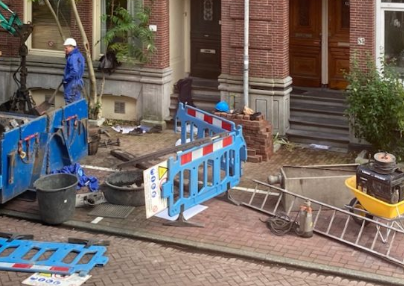Homeowners and buyers are often not aware of the flood or other climate-associated problems that they could be faced with, and compulsory “climate labels” would be a way of dealing with this, according to the big three Dutch banks.
The suggestion comes in a joint report by the chief economists at ING, ABN Amro and Rabobank on the Dutch housing market and climate resilience.
Climate change, they say, is likely to make housing more expensive in the future and it is important to take steps now to make more property climate resistant. Without action, they argue, the cost of repairing property and dealing with climate-related damage could create divisions between high and low-income homeowners.
Costs will be inevitable, said ABN Amro chief economist Sandra Phlippen. “It will be important to distribute the pain fairly,” she told the NRC. “Otherwise we will end up with more vulnerable groups all living together in the same vulnerable locations as we see happening in the US and Britain.”
One key measure would be the introduction of a “climate label” which would protect buyers against the financial risk of foundation damage and flooding. By making the risks visible, the price of at-risk buildings would then come under pressure.
“In the long run, sharing object-related climate risk information should be a mandatory part of real estate advertisements, valuation reports and mortgage advice,” they argue.
Financial services watchdog AFM concluded last year that climate risks are not yet having an impact on house prices and also called for the introduction of a uniform climate label, facilitated by the government.
In total, one million homes may have to cope with foundation issues by 2050, a risk that cannot be insured against. Repair costs average €54,000 but could add up to €100,000, the AFM report said.
Different factors
“A climate label at house level, would involve taking a lot of different things into account, but it would be possible,” Jan Kadijk of the Dutch Green Building Council told broadcaster NOS.
“It is not only about the location, the foundations and soil on which a house is built,” he said. “The building itself helps determine the risk. Do you have a basement, a lot of glass or a high doorstep, for example”
Home owners association VEH said it did not see a climate label being introduced in the near future. It would be too expensive and time consuming to inspect every home individually, a spokesman told NOS.
Last November, real estate research group Calcasa said climate change is hanging over the Dutch housing market like a “dark cloud” and could lead to a total loss in value of €325 billion.

